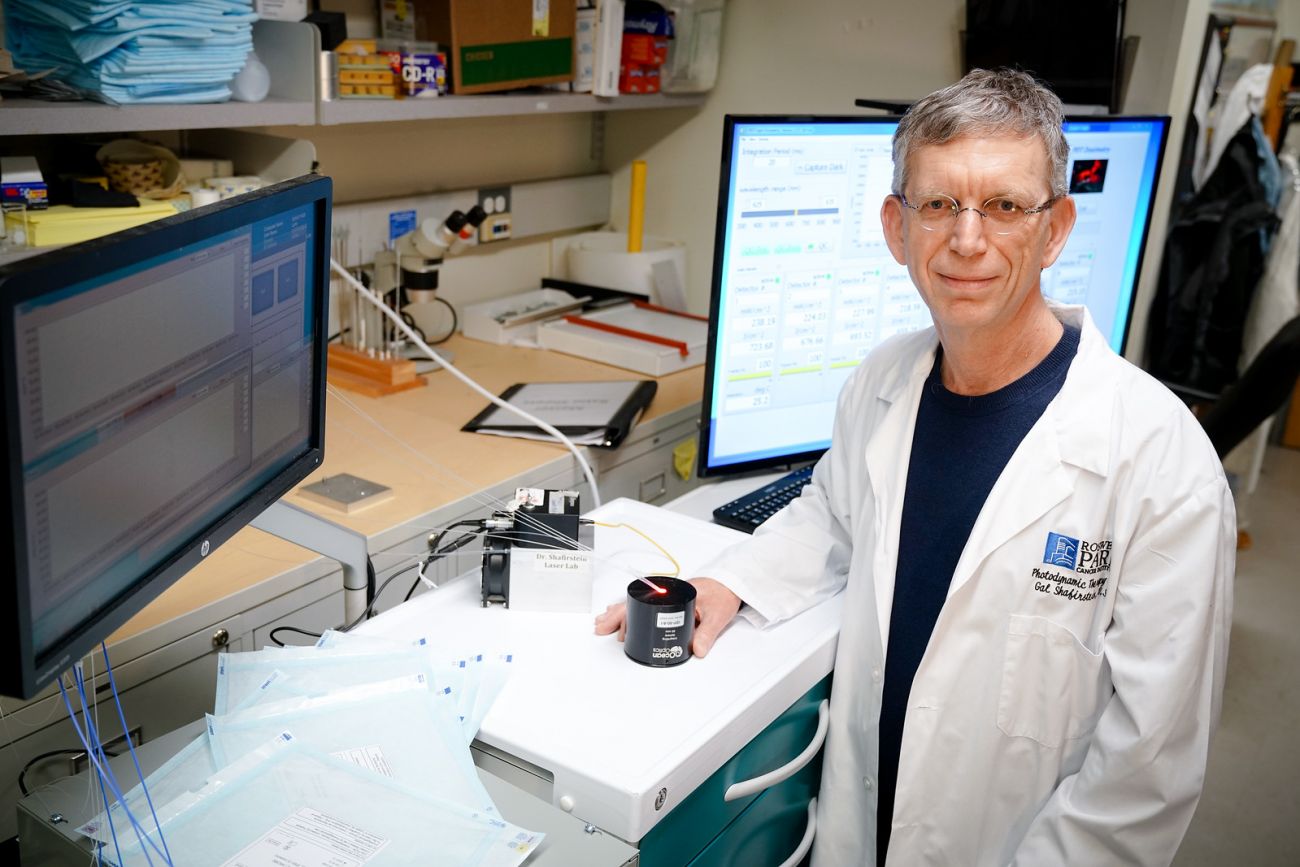What is PDT? How does it work?
Photodynamic therapy (PDT) is a cancer treatment that combines laser light with a light-sensitive drug to kill cancer cells.
First you’re given an injection of the drug, called a photosensitizer (PS). The PS has little effect on the body. It is absorbed by both healthy and cancerous cells, but after a day or so, it disappears from most of the healthy cells and remains mainly in the cancerous cells.
The tumor cells and nearby tissue around the tumor (called the margin) are then exposed to laser light, causing a reaction that kills those cells and shuts down the blood vessels that nourish the tumor. This reaction occurs only in areas where there is laser light and enough PS. This means PDT is a local therapy; normal tissue outside the treatment zone is not affected.
Several studies indicate that PDT can also stimulate the immune system to track down and kill cancer cells throughout the body.
History of PDT
PDT was discovered more than a century ago in Munich, Germany, when a medical student noticed that microorganisms that had been colored with different compounds died when they were exposed to light. Inspired by that discovery, researchers tried, but failed, to find ways of using light-sensitive compounds to treat cancer, smallpox, tuberculosis and other diseases.
A breakthrough occurred at Roswell Park in 1975 when the late Thomas Dougherty, PhD, successfully treated cancer with PDT in preclinical models. Three years later, he conducted the first controlled clinical study in humans. The modern era of PDT had begun.
The goal of PDT
PDT is used to improve control of cancerous tumors in the areas where they first appeared. It can be given along with standard treatments. Several studies have shown that patients lived longer when PDT was added before or during surgery and chemotherapy.
PDT has also shown promising results in relieving tumor-related symptoms in patients with tumors that have not responded to standard therapies. More recent studies are evaluating the value of PDT when it’s given along with targeted therapies and the newest immunotherapies.
Advantages of PDT
For eligible patients, PDT offers several advantages:
- It can be used along with any other standard treatments.
- PDT can be used over and over as needed, without long-term harm to the patient.
Side effects of PDT
The main side effects of PDT are pain and photosensitivity, a temporary sensitivity to light that lasts from approximately 7-10 days to 1-3 months (depending on the photosensitizer used). The pain is controlled with medicine given at the time of treatment. To minimize photosensitivity, you will need to avoid intense sun or bright indoor lights for a few weeks. However, it’s OK to be exposed to low-intensity indoor light (such as fluorescent lights). The treating physician or nurse will give you specific, easy-to-follow instructions about how to reduce the effect of photosensitivity.
